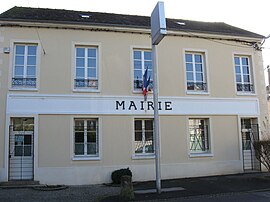포르나시스 제타
Zeta Fornacis| 관측 데이터 EpochJ2000.0이쿼녹스J2000.0(ICRS) | |
|---|---|
| 별자리 | 포르낙스 |
| 우측 상승 | 02h 59m 36.18299s[1] |
| 탈위임 | −25° 16′ 26.8853″[1] |
| 겉보기 크기(V) | 5.67[2] |
| 특성. | |
| 스펙트럼형 | F4 V[3] |
| U-B색지수 | +0.01[2] |
| B-V색지수 | +0.39[2] |
| 아스트로메트리 | |
| 방사 속도(Rv) | +29.09±0.63km[1]/s |
| 적정운동(μ) | RA: +181.005[1]mas/yr Dec.: +84.641[1] mas/yr |
| 시차(시차) | 29.8975 ± 0.0856 마스[1] |
| 거리 | 109.1 ± 0.3 ly (33.45 ± 0.10 pc) |
| 절대치수(MV) | +3.14[4] |
| 세부 사항 | |
| 미사 | 1.8[5] M☉ |
| 반지름 | 1.62+0.02 −0.03[1] R☉ |
| 루미도 | 4.77±0.02[1] L☉ |
| 표면 중력(log g) | 4.16±0.14[5] cgs |
| 온도 | 6,699+65 −39[1] K |
| 금속성 [Fe/H] | +0.02[3] 덱스 |
| 회전 속도(v sin i) | 84.9±4.2km[4]/s |
| 나이 | 1.5[5] Gyr |
| 기타 지정 | |
| 데이터베이스 참조 | |
| 심바드 | 자료 |
ζ Fornacis(흔히 라틴어로 제타 Fornacis)는 Fornax의 남쪽 별자리에 있는 별의 바이엘 명칭이다.육안으로는 5.67의 외관상으로 희미하게 보인다.[2]측정된 연간 시차 변화량 29.9 mas를 바탕으로 태양으로부터 약 109광년 거리에 위치한다.[1]이 별은 방사상 속도 +29 km/s로 더 멀리 떠내려가고 있다.[1]제타 포르나시스 남동쪽 약 1.3°에 위치하는 은하는 NGC 1232이다.[7]
이것은 F4 V의 별 분류를 가진 F형 주계열성으로,[3] 추정 연령이 15억년으로 태양 질량의[5] 1.8배, 태양 반지름의 1.6배에[1] 이른다.이 별은 유효 온도 6,699 K로 광권으로부터 태양의 4.77배 광도를 방사하고 있다.[1]그것은 84.9 km/s의 예상 회전 속도로 회전하고 있으며,[4] 천문학자들이 수소와 헬륨 이외의 원소의 풍부함을 일컫는 거의 태양에 가까운 야금성을 가지고 있다.[3]이 별은 히아데스 성단과 우주를 통해 공통적인 움직임을 공유하는 별들의 그룹인 히아데스 성운의[8] 구성원으로서 가능성이 높다.
제타 포르나시스는 M 2.5의 분류를 가진 진도 13.50의[9] 항성인 NLTT 9563을 가지고 있다.[10]2004년 현재 이 동반자는 288.1°[9]의 위치 각도를 따라 176.1 아크초의 각도 분리에 위치하였다.
참조
- ^ a b c d e f g h i j k l m Brown, A. G. A.; et al. (Gaia collaboration) (August 2018). "Gaia Data Release 2: Summary of the contents and survey properties". Astronomy & Astrophysics. 616. A1. arXiv:1804.09365. Bibcode:2018A&A...616A...1G. doi:10.1051/0004-6361/201833051.이 소스에 대한 가이아 DR2 기록 VizieR.
- ^ a b c d Mermilliod, J.-C. (1986), "Compilation of Eggen's UBV data, transformed to UBV (unpublished)", Catalogue of Eggen's UBV Data, SIMBAD, Bibcode:1986EgUBV........0M.
- ^ a b c d Gray, R. O.; et al. (2006), "Contributions to the Nearby Stars (NStars) Project: spectroscopy of stars earlier than M0 within 40 pc-The Southern Sample", The Astronomical Journal, 132 (1): 161–70, arXiv:astro-ph/0603770, Bibcode:2006AJ....132..161G, doi:10.1086/504637, S2CID 119476992.
- ^ a b c Ammler-von Eiff, Matthias; Reiners, Ansgar (June 2012), "New measurements of rotation and differential rotation in A-F stars: are there two populations of differentially rotating stars?", Astronomy & Astrophysics, 542: A116, arXiv:1204.2459, Bibcode:2012A&A...542A.116A, doi:10.1051/0004-6361/201118724, S2CID 53666672.
- ^ a b c d David, Trevor J.; Hillenbrand, Lynne A. (2015), "The Ages of Early-Type Stars: Strömgren Photometric Methods Calibrated, Validated, Tested, and Applied to Hosts and Prospective Hosts of Directly Imaged Exoplanets", The Astrophysical Journal, 804 (2): 146, arXiv:1501.03154, Bibcode:2015ApJ...804..146D, doi:10.1088/0004-637X/804/2/146, S2CID 33401607.
- ^ "zet For". SIMBAD. Centre de données astronomiques de Strasbourg. Retrieved 2017-01-22.
- ^ Bakich, Michael E. (2010), 1,001 Celestial Wonders to See Before You Die: The Best Sky Objects for Star Gazers, The Patrick Moore Practical Astronomy Series, Springer Science & Business Media, p. 400, ISBN 978-1441917775.
- ^ Eggen, O. J. (June 1985), "A systematic search for members of the Hyades Supercluster. IV - The metallic-line stars and ultrashort-period Cepheids", Astronomical Journal, 90: 1046−1059, Bibcode:1985AJ.....90.1046E, doi:10.1086/113812.
- ^ a b Gould, Andrew; Chanamé, Julio (February 2004), "New Hipparcos-based Parallaxes for 424 Faint Stars", The Astrophysical Journal Supplement Series, 150 (2): 455−464, arXiv:astro-ph/0309001, Bibcode:2004ApJS..150..455G, doi:10.1086/381147, S2CID 8494577.
- ^ Scholz, R.-D.; et al. (October 2005), "Search for nearby stars among proper motion stars selected by optical-to-infrared photometry. III. Spectroscopic distances of 322 NLTT stars", Astronomy and Astrophysics, 442 (1): 211−227, arXiv:astro-ph/0507284, Bibcode:2005A&A...442..211S, doi:10.1051/0004-6361:20053004, S2CID 7013323.


